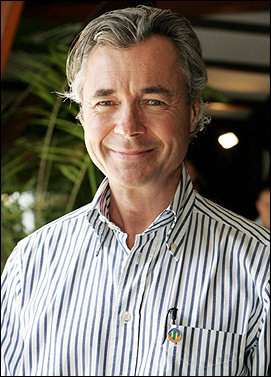
The system built to manage Russia’s nuclear legacy is crumbling, our new report shows
Our op-ed originally appeared in The Moscow Times. For more than three decades, Russia has been burdened with the remains of the Soviet ...
News

Publish date: March 31, 2005
Written by: Charles Digges
News
The memorandum is meant "to assist with the permanent closure of one of the final operating weapons-grade plutonium production reactors in Russia," the countries said in the statement. Ottawa will contribute nine million Canadian dollars $7m US) to the US Department of Energy’s (DOEs) Elimination of Weapons-Grade Plutonium Production (EWGPP) program. The entire programme is currently estimated to cost at least $466m US.
Russia still operates three of its formerly 14 weapons-grade plutonium reactors. Two of the production reactors are located in Tomsk, and the third in Zheleznogorsk, near the Central Siberian city of Krasnoyarsk. The statement issued by the Canadian and US government did not specify which reactor the new co-operation will affect.
The co-operation falls under the G8-led Global Partnership Against the Spread of Weapons and Materials of Mass Destruction.
The failed CTR approach
The plutonium reactor programme, originally aimed at converting the cores of the last three of Russias weapons-grade plutonium reactors by 2000, has been stymied by bureaucracy and poorly developed science by both the US and Russian sides since the Co-operative Threat Reduction (CTR) programme began handling the procedure in 1994.
At that time, a process of core conversion, which would prevent the reactors from producing weapons-grade plutonium, yet still keep power and heat available to the communities that depend on them for that purpose. But former CTR officials close to the process, as well as other US and Russian observers, have told Bellona Web that the science of the core conversion process was ill considered and ultimately unsafe.
The DOE steps in, but has yet to save the dayThe plutonium reactors, which pump out some 1,300 kilograms of new weapons-grade plutonium with each year they remain open, pose a proliferation risk and the plutonium could be used to make nuclear arms. This plutonium is stored on site at the reactors in oxide form.
But even the fossil fuel approach has fallen badly behind schedule and become burdened by more bureaucracy and the work of 17 US hired contractors—and their own subcontractors, former and current US and Russian officials have told Bellona Web.
As of today, neither side has yet produced even the most rudimentary working plan for powering the reactors down, securing the plutonium, building the fossil fuel plants, or dismantling the reactor—the latter of which will take 50 years before it is safe for workers to knock them down.
It is not clear how precisely the new Canadian money will be used, and officials handling the agreement in the US and Canada handling the project could not be reached for immediate comment.
Canadian Foreign Affairs Minister Pierre Pettigrew nonetheless hailed the new agreement with Washington at a news conference, AFP reported.
"This agreement is key to halting the production of nuclear weapons materials," he said.
Samuel Bodman, the newly-initiated US secretary of energy, was equally satisfied, saying: "Ending the production of weapons-grade plutonium is a non-proliferation priority for the United States and the international community. The signing of this MOU with our Canadian partners is another key step toward meeting this priority."

Our op-ed originally appeared in The Moscow Times. For more than three decades, Russia has been burdened with the remains of the Soviet ...

The United Nation’s COP30 global climate negotiations in Belém, Brazil ended this weekend with a watered-down resolution that failed to halt deforest...

For more than a week now — beginning September 23 — the Zaporizhzhia Nuclear Power Plant (ZNPP) has remained disconnected from Ukraine’s national pow...

Bellona has taken part in preparing the The World Nuclear Industry Status Report 2025 and will participate in the report’s global launch in Rome on September 22nd.